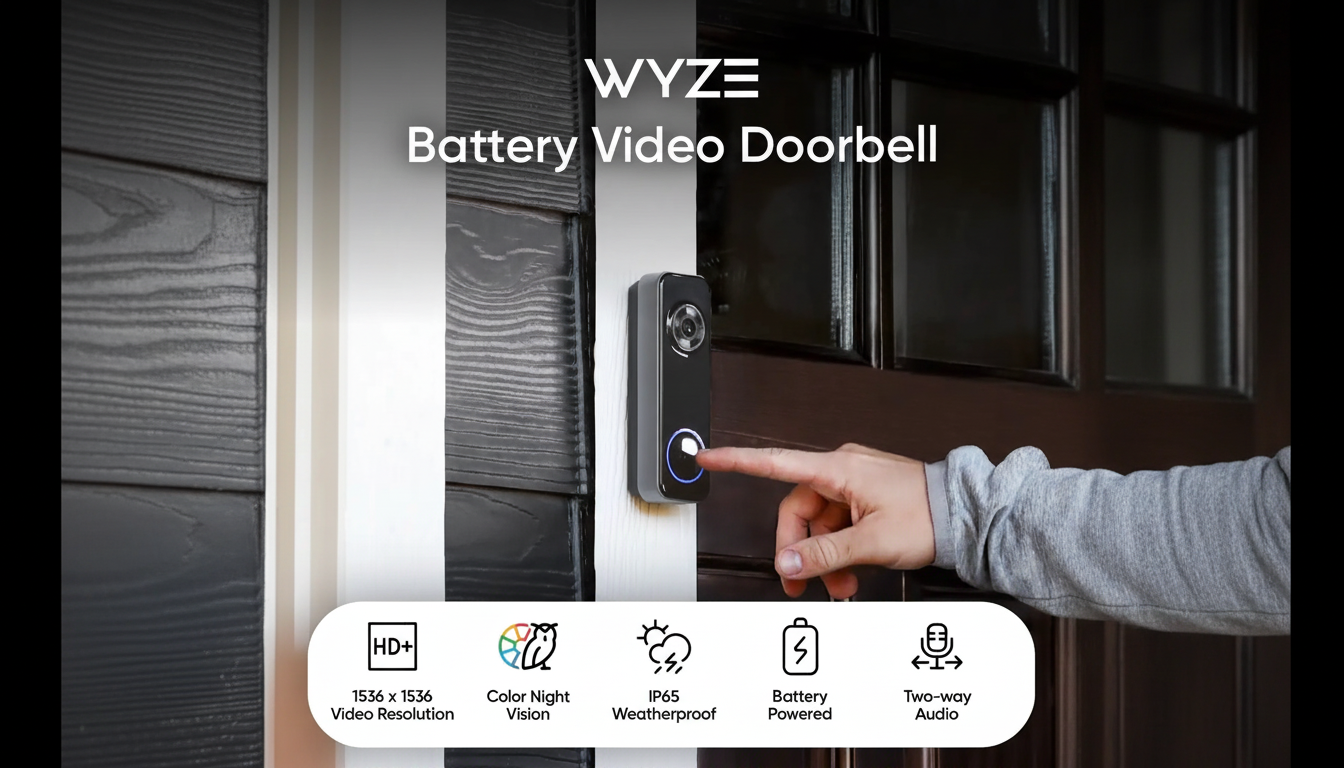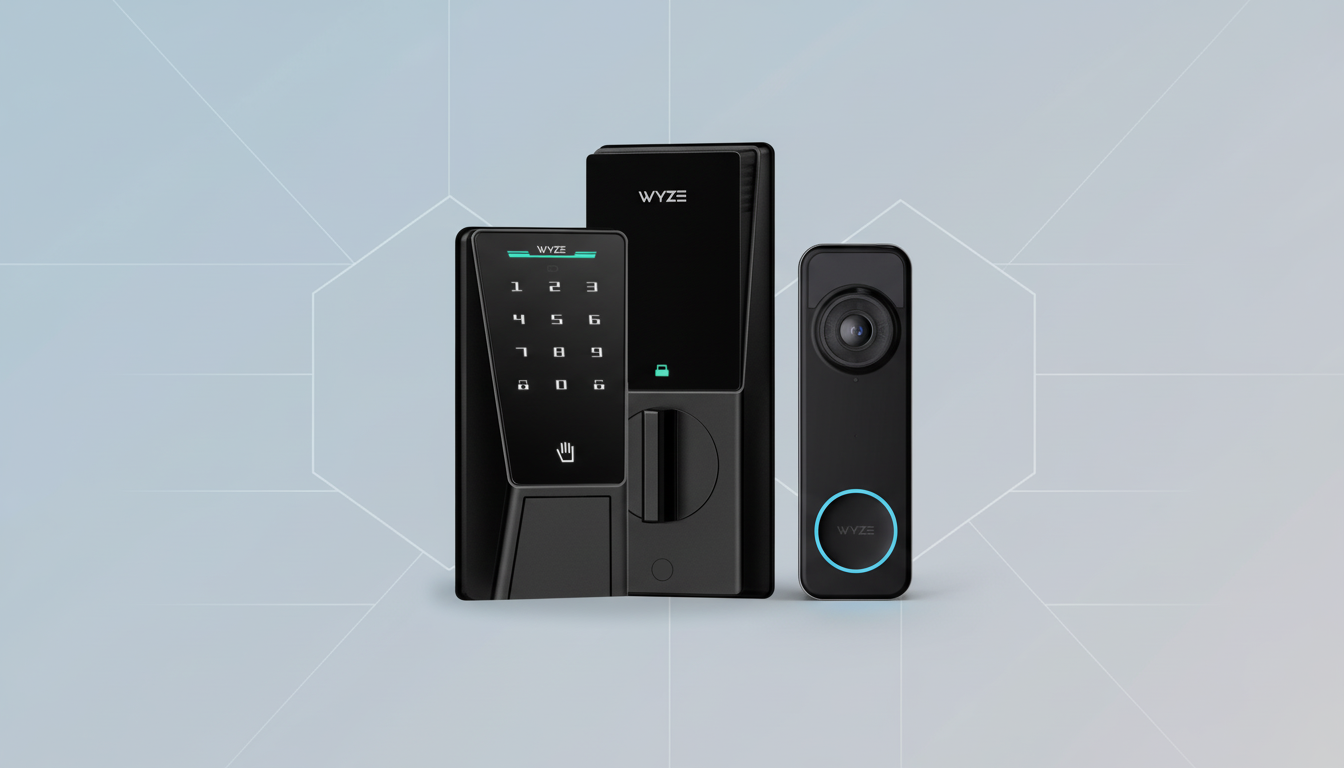Wyze just took a shot across Google’s bow with the new $65.98 Battery Video Doorbell, which is about $114 cheaper than the Nest Doorbell, which sells for $179.99. Nor does the budget tag read like a stripped-down spec sheet, which is why its release is getting outsized attention from the smart home crowd.
Key specs and features of Wyze’s battery video doorbell
The camera provides a 1:1 HD+ view and has a 150° x 150° field of view, which Klevig said is optimal to capture visitors from head to toe, as well as keep packages in frame.

More recently, that square framing has become a preference for doorstep coverage, useful when the porch is snug.
Power up however you prefer: simply wire-free or hardwire it for uninterrupted power. Wired, the doorbell also enables local recording to a microSD card 24/7, which is an uncommon feature at this price but a useful possibility for shoppers leery of cloud-only storage.
Wyze says the battery will last up to six months per charge, topped up over USB. Actual operating life will depend on activity and temperature, as well as settings, but the claim is an optimistic baseline for casual use.
It’s also prepared for the future, in terms of connectivity, with Wi‑Fi 6 support, which can offer a performance boost where networks are susceptible to congestion. Two-way talk, fast voice responses, and an optional motion-triggered “You are being recorded” warning complete the deterrence toolkit.
On the software front, you have motion zones and event review in the Wyze app, as well as the option to enable AI-powered alerts (people, packages, vehicles) courtesy of the paywalled Wyze Cam Plus subscription. It pairs nicely with Alexa, Google Assistant, and IFTTT, and integrates with Wyze Automations and the Wyze Palm Lock for unlocking convenience from video.
How it compares to the Nest Doorbell on price and features
The headline difference is price: Wyze’s $65.98 doorbell costs roughly $114 less than Google’s $179.99 Nest Doorbell. If you’re cobbling together a porch cam on the cheap, that’s not a rounding error; it’s the difference between getting one gizmo and outfitting all the entry points.
Feature trade-offs are more nuanced. Wyze offers both wired and battery-powered operation in the same model, while Google has separate Nest Doorbell models for wired and battery. Wyze also includes the option for local microSD recording when wired; Nest is still cloud-first and offers no option for local storage.
On smart alerts, though, Nest will have core object detection (people, packages, vehicles, and animals) for free—facial recognition lives only with Nest Aware. Wyze gates those AI alerts behind Cam Plus, which makes them a little more expensive in the long run but keeps hardware prices low.

Each wants to see the front door and face in a tall frame, though Wyze does it in a 1:1 aspect versus Nest’s vertical view. Ultimately, it will come down to image quality, lag, and notification reliability—early adopters should wait for independent testing before crowning a winner.
Price disruption and market context for Wyze’s doorbell
Sub-$70 for a battery doorbell with Wi‑Fi 6, two-way audio, and optional local recording is unheard of. Similar battery-operated models from bigger names are usually $100 to $200, plus extra charges for chimes or subscriptions. Wyze’s plan is to sell for cheap and upsell with optional services, a formula the brand has relied on across its camera lineup.
Analyst firms, such as Parks Associates, have repeatedly published observations showing that upfront cost is still a leading inhibitor to smart home adoption. By cutting triple-digit premiums without withholding essential features, Wyze is teeing this doorbell up as an impulse-friendly entry point for multi-unit renters and first-time home buyers who can’t or won’t run new wiring.
It’s also a shot across the bow at incumbents. Ring still holds a clear lead in the category, and Google’s Nest hardware is tightly woven with its Home ecosystem. But value plays can reset expectations quickly—especially when they check boxes like local recording and voice assistant support that shoppers research vigorously on forums and in buyers’ guides from Consumer Reports and other testing labs.
What buyers should know before choosing Wyze’s doorbell
Battery life claims are best-case. In addition, busy street scenes with a high S/N ratio, frequent Live View use, and cold temperatures can reduce the time between battery recharges. If you have a busy doorbell location, wiring it for power will turn local recording on and eliminate charging responsibilities.
Local storage uses a microSD card and a wired install. Convenience and offsite backup in the cloud are still important for some; just consider subscription fees and limitations to event history. Also of note is your smart home mix—Wyze touts Alexa, Google Assistant, and IFTTT support, with Apple Home not on the spec sheet.
As with any connected camera, review privacy settings, turn on two-factor authentication, and create motion zones to cut down on unnecessary clips. Tiny adjustments can greatly improve usability and reduce battery drain.
Bottom line: value, trade-offs, and who should consider it
Priced at just $65.98, Wyze’s Battery Video Doorbell recalibrates the value equation and undercuts Google’s Nest—right, we mean that in terms of proportionality to an astronomical degree: the curb gulf between both products could not be wider. If you want a capable, flexible doorbell and don’t want to spend money on the more expensive flagships—and are okay with subscribing to optional services for higher-end AI features—this looks like one of the best deals in front-door tech at the moment.

